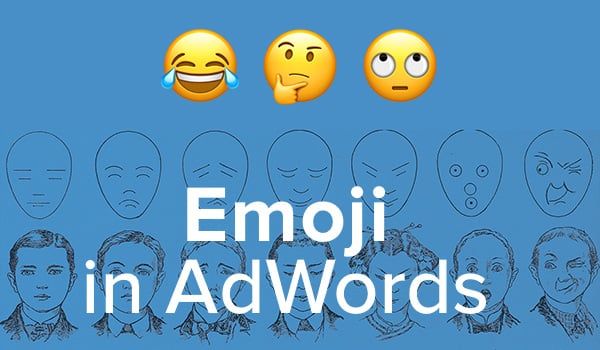
Google AdWords to Display Emoji in Advertisements

From texting friends to ordering pizza — even registered domain names — emoji are making their way into our everyday lives. Most recently, Google confirmed that these expressive faces and ideographs will be allowed to appear in Google AdWords when they are “relevant, useful and fun.”
Google’s relationship with emoji.
Although they briefly allowed emoji in page titles and descriptive snippets in early 2015, for the last two years Google banished the colorful icons from search results. They found that people were overdoing it — including too many emoji in hopes of attracting customers. But as of February, you may once again see a few sprinkled back into your organic and paid results.
Benefits.
There are benefits to allowing emoji to appear in organic and AdWords results. Humans process visual information much faster than text, so an emoji of a maple leaf, a strip of bacon and a doughnut will be processed by a customer faster than the phrase “maple-bacon doughnuts.”
Google’s relationship with emoji.
Although they briefly allowed emoji in page titles and descriptive snippets in early 2015, for the last two years Google banished the colorful icons from search results. They found that people were overdoing it — including too many emoji in hopes of attracting customers. But as of February, you may once again see a few sprinkled back into your organic and paid results.
Benefits.
There are benefits to allowing emoji to appear in organic and AdWords results. Humans process visual information much faster than text, so an emoji of a maple leaf, a strip of bacon and a doughnut will be processed by a customer faster than the phrase “maple-bacon doughnuts.”

Bottom line.
Although they are a popular way to grab a visitor’s attention, there doesn’t appear to be a clear way forward yet. While Google favors some emoji, they reject others (the infamous 💩, for example, did not make the cut). Emoji could help with more specific search queries, and therefore improve your quality score, but in order for emoji to be searchable to begin with, they’d have to be entered in the query’s metadata, not simply pasted into the title as most advertisers are doing now.
More experimentation is needed to define exactly how emoji in AdWords will fare — or if Google will even continue to allow it. If emoji continue to be allowed, the novelty may wear off. Its effectiveness also depends on your industry — the maple-bacon doughnut example is harmless for a bakery trying to attract the attention of a more visual audience. For a professional industry, it may be best to stick to text for now.
